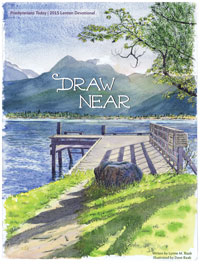Celtic Christianity: The Trinity
Lynne Baab • Saturday May 9 2015
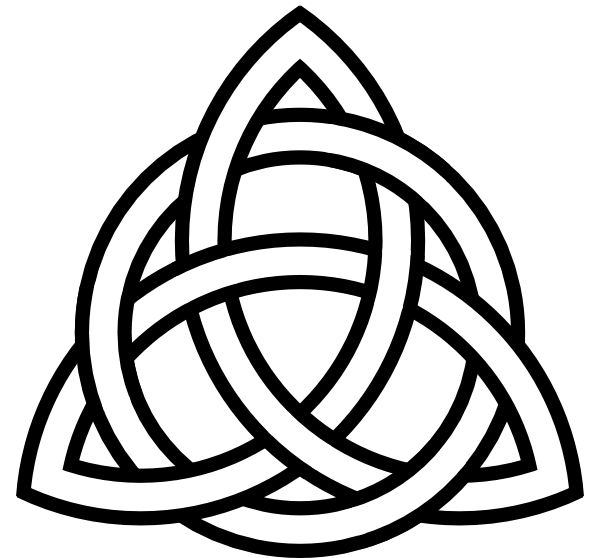
Deeply ingrained in the heart and soul of Celtic Christian spirituality is the mystery of one God in three persons, a truth that is taught clearly in the Bible, even though the word Trinity is not found in Scripture. Three in one; one in three. Esther de Waal writes:
Here is a profound experience of God from a people who are deeply Trinitarian without any philosophical struggle about how that is to be expressed intellectually. Perhaps the legend of St. Patrick stooping down to pick up the shamrock in order to explain the Trinity is after all more significant than we might...
Read full article »Celtic Christianity: the earth and art
Lynne Baab • Wednesday April 29 2015
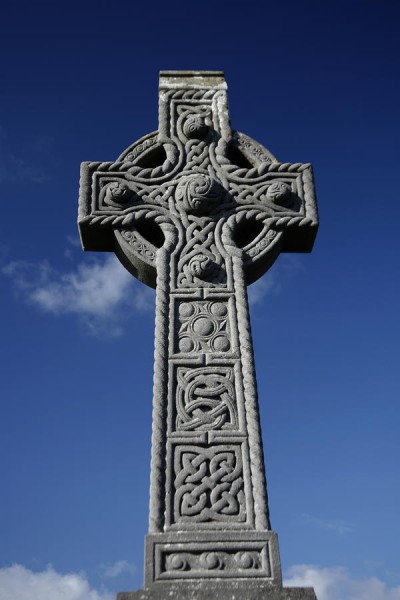
It’s no accident that there are rabbits, mice, lizards and fish drawn between the lines and around the edges of the pages of the Book of Kells. The profound connection that the Celts felt between their lives and God’s creation spilled over into their art.
Sister John Miriam Jones, in her book With an Eagle’s Eye, writes that their sense of God’s presence and love led the Celts
to artistic expressions using metal, wood, stone, paint, words, and music. These wholehearted art lovers found countless ways to utilize the arts in expressing their beliefs and their love. The monastic era coincides with the...
Read full article »Celtic Christianity: pilgrimage and the Celtic sense of place
Lynne Baab • Wednesday April 22 2015
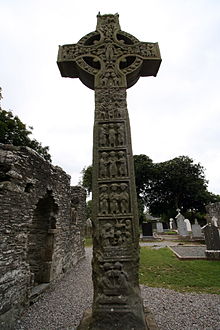
Celtic Christians found God everywhere, in the smallest, mundane household activity, in nature, and in sites where something special had happened to a saint. They saw every good thing as a gift from God, and they saw difficult experiences as a different kind of gift, a way to learn or a call to repentence.
The fire that warmed the hearth and lightened the darkness spoke clearly that God is light. The bread that filled the hungry belly spoke of God’s provision. The trees and animals spoke of God’s artistry and care for creation.
The Celts saw God clearly in nature. By no means...
Read full article »Celtic Christianity: the first post of a series
Lynne Baab • Thursday April 16 2015
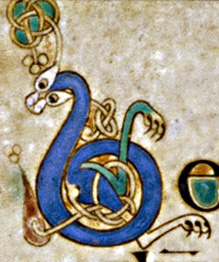
A few years ago a friend from Ireland gave me a book full of pictures from the Book of Kells. I was astonished at the beauty and complexity of the illustrations. It was my first introduction to Celtic Christianity.
The Book of Kells is a lavishly illustrated version of the four Gospels, produced in Ireland between the seventh and ninth centuries. Capital letters are colorful figures of people or animals, intertwined with Celtic knots, those crossed lines with no beginning or end that we see so often today in Celtic jewelry.
There are animals everywhere in the Book of Kells. Fish swim between...
Read full article » Two Hands: Grief and Gratitude in the Christian Life
A book for people grieving because of the pandemic, health challenges, family conflict, or other losses, while also seeing so many things to be thankful for. A book for small groups – each of the seven chapters has discussion questions at the end. A book for Advent and Lent. This book draws on a vivid word picture of holding grief in one hand and gratitude in the other, and allowing ourselves to be stretched large by both.
Two Hands: Grief and Gratitude in the Christian Life
A book for people grieving because of the pandemic, health challenges, family conflict, or other losses, while also seeing so many things to be thankful for. A book for small groups – each of the seven chapters has discussion questions at the end. A book for Advent and Lent. This book draws on a vivid word picture of holding grief in one hand and gratitude in the other, and allowing ourselves to be stretched large by both. Joy Together: Spiritual Practices for Your Congregation
Although interest in spiritual practices has grown in recent years, most of the books available address individuals who wish to try Christian disciplines such as fasting or fixed-hour prayer.
Joy Together: Spiritual Practices for Your Congregation
Although interest in spiritual practices has grown in recent years, most of the books available address individuals who wish to try Christian disciplines such as fasting or fixed-hour prayer.This book, by contrast, offers guidance and examples to Christian leaders as they seek ways to involve their congregations or small groups in spiritual practices.
NEW: Nurturing a contemplative stance for navigating challenging times
Lynne Baab • Friday August 11 2023
By Lynne M. BaabNEW: Spiritual Practices for People in Ministry
Lynne Baab • Sunday June 26 2022
Making Space for a Continuing Conversation with the Living GodNEW: Yes, Jesus Told Us to Pray in Secret. But He Also Prayed with His Friends.
Lynne Baab • Saturday October 9 2021
By Lynne M. Baab. Originally published in Christianity Today, July 8, 2021
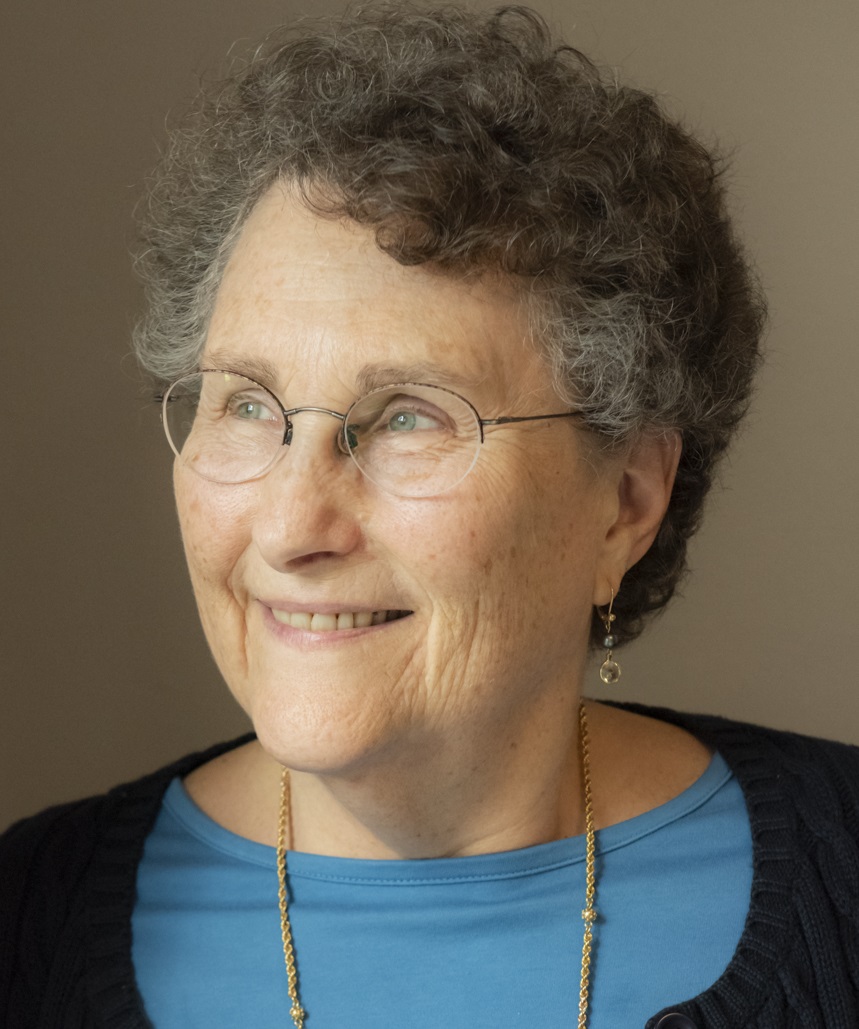
Lynne M. Baab, Ph.D., is a teacher and writer. She has written numerous books, Bible study guides, and articles for magazines and journals. Lynne is passionate about prayer and other ways to draw near to God, and her writing conveys encouragement for readers to be their authentic selves before God. She encourages experimentation and lightness in Christians spiritual practices. Read more »
Lynne is pleased to announce the release of her book on grief and gratitude, designed to help people grieving from anything, including the pandemic, while also desiring to notice God's good gifts. Two Hands: Grief and Gratitude in the Christian Life is available in paperback, audiobook, and for kindle. Lynne's 2018 book is Nurturing Hope: Christian Pastoral Care for the Twenty-First Century, and her best-selling book is Sabbath-Keeping: Finding Freedom in the Rhythms of Rest (now available as an audiobook as well as paperback and kindle). You can see her many other book titles here, along with her Bible study guides.
Lynne recently spoke about empathy and also about bringing spiritual practices to life.
Lynne was interviewed recently for the podcast "As the Crow Flies". The first episode focuses on why listening matters and the second one on listening skills.
Here are two talks Lynne gave on listening (recorded in audio form on YouTube): Listening for Mission and Ministry and Why Listening Matters for Mission and Ministry.
"Lynne's writing is beautiful. Her tone has such a note of hope and excitement about growth. It is gentle and affirming."
— a reader
"Dear Dr. Baab, You changed my life. It is only through God’s gift of the sabbath that I feel in my heart and soul that God loves me apart from anything I do."
— a reader of Sabbath Keeping
Subscribe
To receive an email alert when a new post is published, simply enter your email address below.
Featured posts
- Drawing Near to God with the Heart: first post of a series »
- Quotations I love: Henri Nouwen on being beloved »
- Worshipping God the Creator: the first post of a series »
- Sabbath Keeping a decade later: the first post of a series »
- Benedictine spirituality: the first post of a series »
- Celtic Christianity: the first post of a series »
- Holy Listening »
- A Cat with a Noble Character »
- Welcome to my website »
Tags
Archive
- May 2024 (3)
- April 2024 (4)
-
March 2024 (5)
- Friendship, loneliness, and prayer: Praying about distractions from empathy
- Friendship, loneliness, and prayer: Praying to keep empathy flowing
- Friendship, loneliness, and prayer: Everyday initiative
- Friendship, loneliness, and prayer: Praying for guidance for ending conversations
- Friendship, loneliness, and prayer: Reflecting on the series
- February 2024 (4)
- January 2024 (2)
-
December 2023 (6)
- Friendship, loneliness, and prayer: Initiating
- Friendship, loneliness, and prayer: Praying about listening roadblocks
- Friendship, loneliness, and prayer: Praying to love the poverty in our friends
- Friendship, loneliness, and prayer: Praying for “holy curiosity”
- Friendship, loneliness, and prayer: Praying for “holy listening”
- Friendship, loneliness, and prayer: Praying to give affection extravagantly
- November 2023 (4)
-
October 2023 (5)
- Friendship, loneliness and prayer: A listening skill with two purposes
- Friendship, loneliness, and prayer: Saying “thank you” to friends
- Friendship, loneliness, and prayer: One more way reflecting helps us
- Friendship, loneliness, and prayer: Lessons from two periods of loneliness
- Friendship, loneliness, and prayer: Types of reflecting, a listening skill
- September 2023 (4)
- August 2023 (4)
- July 2023 (5)
- June 2023 (3)
- May 2023 (6)
- April 2023 (4)
- March 2023 (4)
- February 2023 (4)
- January 2023 (4)
- December 2022 (5)
- November 2022 (1)
- October 2022 (5)
- September 2022 (5)
-
August 2022 (6)
- Draw near: Confessing sin without wallowing
- Draw near: A favorite prayer about peace, freedom, and much more
- Drawing near with Desmond Tutu: God’s love is the foundation for prayer
- Draw near: Worshipping God with Desmond Tutu
- Draw near: Yearning, beseeching and beholding with Desmond Tutu
- Draw near: Praising God with Desmond Tutu
- July 2022 (2)
- June 2022 (6)
- May 2022 (5)
- April 2022 (6)
- March 2022 (5)
- February 2022 (4)
- January 2022 (3)
- December 2021 (5)
- November 2021 (4)
- October 2021 (5)
- September 2021 (4)
- August 2021 (4)
- July 2021 (4)
- June 2021 (4)
- May 2021 (4)
- April 2021 (5)
- March 2021 (4)
- February 2021 (4)
- January 2021 (4)
- December 2020 (5)
- November 2020 (3)
- October 2020 (5)
- September 2020 (4)
- August 2020 (4)
- July 2020 (5)
- June 2020 (4)
-
May 2020 (4)
- Spiritual diary of sheltering in place: The lifeline of separating thoughts from feelings
- Spiritual diary of sheltering in place: The lifeline of welcoming prayer
- Spiritual diary of sheltering in place: a kite string as a lifeline
- Spiritual diary of sheltering in place: The lifeline of God’s distant future
-
April 2020 (7)
- Spiritual diary of self-isolation: the lifeline of God’s constancy
- Spiritual diary of sheltering in place: The lifeline of accepting my place as a clay jar
- Spiritual diary of sheltering in place: the lifeline of memories
- Spiritual diary of sheltering in place: the lifeline of “Good” in “Good Friday”
- Spiritual diary of sheltering in place: The lifeline of “easier does not mean easy”
- Spiritual diary of sheltering in place: The lifeline of nature
- Spiritual diary of sheltering in place: the lifeline of God’s voice through the Bible
-
March 2020 (7)
- Important anniversaries in 2020: The first Earth Day in 1970
- Important anniversaries in 2020: Florence Nightingale was born in 1820
- Spiritual diary of self-isolation: Weeks 1 and 2
- Spiritual diary of self-isolation: God's grace as a lifeline
- Spiritual diary of self-isolation: The lifeline of limits on thoughts
- Spiritual diary of self-isolation: Wrestling with God for a blessing
- Spiritual diary of self-isolation: responding to terror by listening to Jesus voice
- February 2020 (4)
- January 2020 (5)
- December 2019 (4)
- November 2019 (4)
- October 2019 (5)
- September 2019 (4)
- August 2019 (5)
- July 2019 (4)
- June 2019 (4)
- May 2019 (5)
- April 2019 (4)
- March 2019 (4)
- February 2019 (4)
-
January 2019 (5)
- Nurturing friendships in a cellphone world: Jesus as Friend
- Nurturing friendships in a cellphone world: Friendship with Christ and friendship with others
- Nurturing friendships in a cellphone world: Who is my neighbor?
- Nurturing friendships in a cellphone world: Friendship as action
- Nurturing friendships in a cellphone world: Hymns that describe friendship with God
- December 2018 (3)
-
November 2018 (5)
- Connections between the Bible and prayer: Sensory prayer in Revelation
- First post in a new series: Nurturing friendships in a cellphone world
- Nurturing friendships in a cellphone world: Strong opinions and responses
- Nurturing friendships in a cellphone world: My conversation partners about friendship
- Nurturing friendships in a cellphone world: Two views about communication technologies
- October 2018 (4)
- September 2018 (4)
-
August 2018 (5)
- Providing Christian Care in Our Time
- Providing Christian care in our time: Seven trends in pastoral care today
- Providing Christian Care in Our Time: Skills for Pastoral Care
- Providing Christian care: The importance of spiritual practices
- First post in a new series: Connections between the Bible and prayer
- July 2018 (4)
- June 2018 (4)
- May 2018 (5)
- April 2018 (4)
- March 2018 (5)
- February 2018 (4)
- January 2018 (4)
- December 2017 (5)
- November 2017 (4)
- October 2017 (4)
- September 2017 (5)
- August 2017 (4)
- July 2017 (4)
- June 2017 (4)
-
May 2017 (5)
- My new spiritual practice: Separating thoughts from feelings
- My new spiritual practice: Feeling the feelings
- My new spiritual practice: Coping with feelings that want to dominate
- My new spiritual practice: Dealing with “demonic” thoughts
- My new spiritual practice: Is self-compassion really appropriate for Christians?
- April 2017 (4)
- March 2017 (5)
- February 2017 (4)
- January 2017 (4)
- December 2016 (5)
- November 2016 (4)
- October 2016 (4)
- September 2016 (5)
- August 2016 (4)
- July 2016 (4)
- June 2016 (4)
- May 2016 (5)
- April 2016 (4)
- March 2016 (5)
- February 2016 (4)
- January 2016 (4)
- December 2015 (4)
- November 2015 (4)
- October 2015 (5)
- September 2015 (4)
- August 2015 (4)
- July 2015 (4)
- June 2015 (4)
- May 2015 (4)
- April 2015 (6)
- March 2015 (4)
- February 2015 (4)
- January 2015 (4)
- December 2014 (5)
- November 2014 (4)
- October 2014 (4)
- September 2014 (4)
- August 2014 (5)
- July 2014 (4)
- June 2014 (7)



















